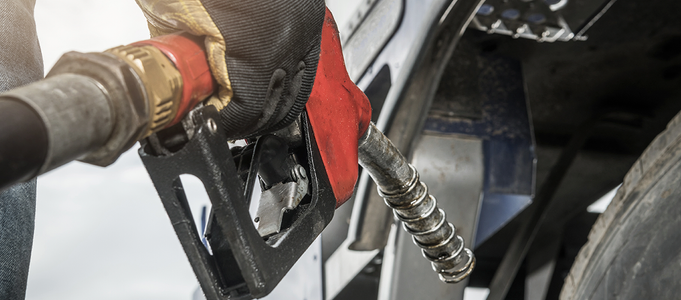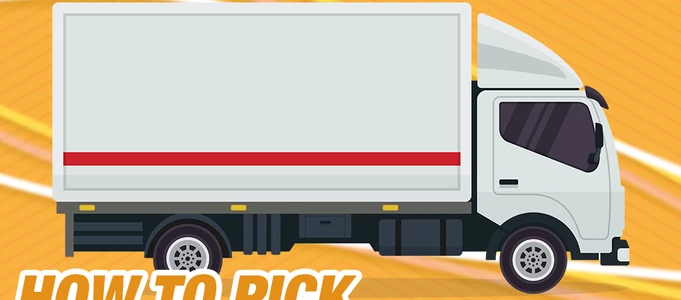How a Fleet Dash Cam Reduces Risks and Keeps Drivers Safe
An accident has just happened with one of your fleets and your telematics solution is at the ready with valuable information. You then discover that you’re even more ahead of the game thanks to the in-car video system you’ve recently installed in all our fleets. While telematics has the ability to tell you what happened, video goes a step further by showing you the reason why.
Mobile video technology has emerged as a powerful tool for fleet operators to maximize the value received from telematics while helping fleets reduce risk and keeping drivers safe. Dashboard cameras can be very beneficial for companies because they provide an objective record of what happened during an accident. Having a dash cam often eliminates the need to unravel the conflicting perspectives of the affected parties in an accident. The camera can clearly show important facts like who had the right-of-way or if speeding was a major cause. This can go a long way in defending a driver and reduce fraudulent claims of injuries or accident set-ups.
Dash cams are also useful for fleet managers to monitor drivers and identify those who may need extra training or discipline. A periodic review of footage from vehicle cameras can help managers improve their drivers’ safety behind the wheel.
Benefits of an In-Car Video System
In-vehicle video camera systems deliver powerful benefits to fleet operators in the form of:
-
Better Driver Risk Management
-
Accident Management
-
Operational Effectiveness
-
In-Cab Safety
The best driver risk management (DRM) programs now incorporate event video to isolate the root causes of driving behavior and provide better coaching during training sessions. Telematics data identifies good and bad driving based on data points like speed, hard turning, acceleration and others. Video then isolates the specific driving habits that cause the risky behaviors. Are harsh braking events caused by following too close or by distracted driving? Video also motivates better in-cab performance, dramatically reducing the frequency and severity of critical incidents.
The proper handling of accidents when they happen has become an essential element of fleet management. Timely video evidence of critical incidents and accidents, called “first notification of loss (FNOL)” by insurers, helps exonerate drivers and fleet directors in personal injury cases, and criminal or regulatory prosecutions. Even when the driver is at fault, FNOL reduces the cost of insurance processing and payouts by up to 40%, keeping your premiums in check.
When it comes to operational effectiveness, the real-time situational awareness provided by an in-car video system helps refine operations, improve customer relations and increase profitability. Did complications at the customer site impede delivery? Was the driver off-route for personal or professional reasons? Are road, weather, traffic or other route conditions impacting fuel consumption and vehicle wear and tear? Answers to such questions become readily available with the use of in-vehicle video camera systems.
Finally, in-cab safety monitoring can help employers reduce risk and keep drivers and passengers safe. According to the U.S. Department of Labor, every 12 minutes someone dies in a motor vehicle crash, every 10 seconds an injury occurs and every 5 seconds a crash occurs. In addition to the emotional toll it takes on a business when a fatality occurs or an employee is wounded in an accident, work-related vehicle incidents can become very costly to employers and drivers. Dash cams can become instrumental tools in ensuring driver safety and preventing accidents from happening.
The Right In-Car Video System for You
Choosing the right mobile video solution for your fleet is easier than ever. Advantage Asset Tracking explains some of essential features to look for when considering mobile video solutions. Count on our dedicated team to always prioritize your individual business needs and provide solutions that meet your operational requirements and resource allocations.
4 Tips to Managing Your Electric Fleet
Monitoring the performance of the vehicles in your fleet is essential for maximizing efficiency and profitability. Traditional fleet management techniques, such as tracking utilization or downtime, as well as driver safety trends, will still apply similarly to your electric vehicles. Some other techniques, like route optimization, are even more important to ensure your EVs have enough range to complete their tasks. But what are the EV-specific metrics you should monitor following EV adoption? We’ve outlined four key tips below.
1. The importance of state of charge
One of the most important data points to keep an eye on is your EV’s state of charge (SOC). An EV’s SOC is in some ways no different than a traditional fuel indicator – it shows how “full” the battery is. Since charging takes longer to “fill up the tank” and there aren’t chargers on every street corner, it is more important to keep an eye on this metric.
State of charge can be monitored in real-time during operation in order to ensure the EV will not run out of energy before reaching its charging destination. It can also be used to track EVs that are charging, allowing you to see how long until the vehicle is ready to go.
Fleet managers can use this data to create alerts and notifications to:
-
Flag when an EV is running low
-
Confirm that charging is complete
-
Remind the driver or management team if the vehicle wasn’t plugged in at the end of a shift
2. Reviewing your charging data
The main difference you will experience with EVs in your fleet is how they “fuel up.” To better understand these nuances, fleet operators should review the charging history logs regularly to gain actionable insights.
These data-rich logs will include information such as:
-
When and where each individual EV is charging
-
The full charging duration
-
Starting and ending SOC
All of this data will allow you to create and optimize a charging schedule. Rather than simply charging all of the vehicles at the end of the day, it may be possible to stagger them in between duty cycles or “top up” at a strategically placed charger mid-cycle. Some fleets are even allowing employees to charge these EVs at home and use the data to reimburse them.
Reviewing this data will be critical as you continue to add more EVs to your fleet. It can help you better assess the total amount of charging infrastructure you require and avoid any unnecessary demand charges from using too much power at once.
3. Tracking both gas and electric fuel consumption
Fuel costs are one the largest on-going expenses for a fleet, so it is natural to want to track its consumption. For traditional internal combustion engine (ICE) vehicles this would be done using miles per gallon or L/100km, but this metric clearly doesn’t translate for EVs.
When looking at the energy consumption, or electric fuel, of an individual EV, the unit of measurement is kilowatt hour (kWh). You can simply use this as a replacement to create miles per kWh. However, this becomes less useful if you are trying to compare the performance of your EVs to the ICE vehicles in your fleet. This is why many fleet operators prefer to use miles per gallon of gasoline-equivalent (MPGe) to compare the fuel economy of EVs and other alternative fuel vehicles with gas-powered vehicles. This is an available feature within MyGeotab called the Fuel and EV energy usage report.
If you have incorporated plug-in hybrid electric vehicles (PHEVs) into your fleet, it is even more important to look at fuel consumption, since they use both gasoline and electricity. If your PHEV is running solely on gasoline you are not realizing the true cost savings, or the carbon reduction, that comes from operating an EV.
Currently electric vehicles have a higher acquisition cost than their ICE counterparts, but they come out ahead when you consider the total cost of ownership. In order to understand their true cost, and maximize their efficiency, you have to monitor their fuel consumption closely.
4. Keeping organized as you electrify your fleet
Transitioning to EVs is not going to happen overnight and fleet managers need to be able to manage all of the vehicles in their fleet. A robust telematics platform that includes both EV & ICE vehicles, as well as on-going EV support, is the key to more effective and efficient fleet management. Fortunately, as an approved Geotab partner we can support the largest set of EV models and are committed to supporting your fleet through your electrification journey.
Now is the Time to Prepare Your Winter Fleet Operations
Optimizing your winter maintenance operations maximizes public transportation while minimizing collisions due to winter traveling conditions. With real-time reporting on salt usage and winter maintenance activity, for example, roads can be plowed and de-iced as soon as possible. And while winter may seem months away, not acting now may prevent you from being fully prepared once here.
Prevent Any Fleet Discontinuity This Coming Winter
There’s currently an unprecedented global shortage of semiconductor chips that’s affecting nearly every industry, from automotive to consumer tech, and many more in between. While this shortage has affected consumers, it’s also impacting various government fleets as they are unable to access new vehicles until supply bounces back.
Many fleet managers will need to extend the service life of their existing vehicles until the shortage has been resolved, and they should complete any necessary maintenance now to ensure the vehicles will be able to continue running safely, enabling first responders to have a presence without any interruption.
Today is the day to use your telematics data to accurately measure fleet performance to ensure usage continuity.
Winter operations fleets are taking full advantage of what Geotab has to offer:
-
Automated reporting for regulatory compliance and billing
-
Active tracking for winter maintenance vehicles
-
Accident detection with real-time notifications
-
Accurate measurement of winter equipment usage
-
Route optimization for reduced mileageIdling and fuel consumption trend reports
-
Preventive maintenanceReal-time reporting on salt usage
Complex fleets, like winter operations, often require sophisticated integrations to properly manage their programs. With so many different metrics to track, doing so without the aid of technology can be tough. However, by using a telematics solution, like Geotab’s Public Works solution, you can boost your winter operations and gain greater insight into your fleet’s performance.
Telematics is essential for managing winter maintenance programs because it:
-
Drives down costsImproves operational efficiency
-
Promotes operator safety
-
Provides insight into vehicle location
-
Monitors operational status and levels of service
To learn more about how telematics can help you effectively manage your winter operations and keep roads safe and clear, give us a call or email us at info@advtracking.net.
How Geotab’s GO devices monitor fuel data to help optimize your fleet
Fuel monitoring is a great way for fleet managers to find potential savings. Geotab’s GO devices are able to read a vehicle’s engine and fuel data to perform fuel use calculations.
Fuel data monitoring: How does it work?
When a Geotab GO vehicle tracking device tries to pull data — in this case, fuel data — from the engine, it does so by accessing a specific location on the vehicle’s computer. Standardization means that most vehicles will have the data required, but it won’t always be stored in the same location. When a Geotab GO device is plugged in, it will check possible sources for fuel data and begin verifying which is the correct measurement.
Verifying fuel data
There are three methods the GO device will use to verify that it is getting the correct information:
-
Fuel economy
-
Fuel confidence
-
Active methods
Fuel economy
The Geotab GO device calculates a vehicle’s fuel economy while the vehicle is driving. If the device is getting data from something other than fuel use, the resulting calculation will be incorrect. A device might register near-zero fuel use over a long route or calculate that a massive amount of fuel was consumed over a short trip. When this happens, the device has knowledge that the calculations do not match expected vehicle behavior and can safely discard the data source.
Fuel confidence
The next step used to verify a fuel data source is calculating confidence. This is done through a second-by-second breakdown while comparing how fuel use normally behaves with the help of the following questions:
-
Is fuel use increasing during acceleration?
-
Is the rate constant when the vehicle is cruising?
-
Does the rate change when the vehicle is stopped?
The Geotab GO will compare how the data changes in response to engine activity to calculate fuel confidence. If a data source doesn’t get a passing grade, it’s discarded.
Active methods
Fuel economy and fuel confidence are great ways to eliminate bad fuel data, but both methods work best near the end of a trip. Active monitoring is what allows a GO device to validate fuel data mid-trip or earlier. Essentially, the device will notice and discard outliers early on to make the other calculations easier. The device will also filter data sources that don’t match up with the type of fuel used by the vehicle (gas, diesel, etc.)
Compatibility means reliability
The GO9 device is compatible with a wide range of vehicles. Part of this compatibility is making sure the device can effectively work with the different ways manufacturers store engine data. Geotab’s telematics device is able to sift through possible measurements and only return the most accurate and confident results to our customers. This in turn, lets those customers make the best decisions for their fleet. Learn more about our fuel savings program.
Overcoming the initial barriers to electrification
Until recently, the majority of EVs on the market were compact to mid-size passenger vehicles that did not have the carrying capacity or the electric range capabilities required for many fleet applications, presenting a hurdle for fleets considering electrification. The market has mostly caught up with the demand and this problem has largely been addressed, or will be in the near future.
There are numerous long-range EVs available that have an effective range over 300 miles on a single charge and this will only continue to improve as battery technology advances. This, in combination with an ever-improving network of charging stations, means that “range anxiety” should no longer be a concern.
As for vehicle offerings, a wide variety of Class 2 to 5 EVs are currently available with a number of additional delivery vans and pickup trucks on the horizon. With electric vans boasting payload capacities up to 6,000 lbs and trucks that are able to tow more than 11,000 lbs, there will soon be an EV that suits every fleet’s particular needs.
It is clear that many of the largest players in the last mile industry have moved past any hesitations when it comes to electrification. By committing millions of dollars, and purchasing thousands of vehicles, they are sending a strong message – it’s time to start transitioning to EVs.
Start planning your EV adoption strategy
Last mile delivery may have been one of the first industries to embrace EVs, but now we’re ready to start talking with other fleets to begin their fleet electrification journey. With regulations and sustainability goals fast approaching, it is critical that fleets begin to create strategies for incorporating EVs. The hard part is learning where to start right?
Finding suitable vehicles and building out charging infrastructure can be a time consuming task. Fortunately, Geotab has created a number of tools and assets that we can use to help fleet managers with this transition. More importantly once EVs have been incorporated into your fleet our team backed by Geotab continues to provide on-going insights and support. With official support of over 100 EV makes and models, Geotab is the strongest telematics provider in the EV space.
Download The Essential Guide to Fleet Electrification to start your journey.
How to Best Manage Your Biggest Fleet Cost
Do you know which is the top expense for most fleets today? You guessed it, it’s your fuel cost. On average, fuel makes up around a third of a fleet’s running costs. Because this cost impacts the bottom line of so many of our customers, we compiled five easy ways to cut on a fleet’s fuel bill:
1. Thoroughly analyze your fleet needs
Take time to do a full all-round working knowledge of your entire fleet including vehicles, drivers, customers, processes, systems, spend and regulations. Ask yourself questions such as:
-
Is your fuel purchased wholesale or at the pump?
-
What kind of vehicles are best for your operations?
-
Where and how are your fleet vehicles driven?
2. Your driver behavior makes a difference
How your drivers behave behind the wheel massively impacts how efficient your vehicles are. Speeding, irregular gear changes and hard braking can have a negative impact on fuel economy. Reducing speed is an easy way to cut costs.
3. Properly plan your routes
A vehicle can use a quarter of a gallon of fuel for every 15 minutes it idles so planning ahead can potentially lead to big savings. From assessing driver routes to analyzing the best places to refuel your vehicles, telematics can play an important part in effectively managing journeys and choosing the best routes. The ability to track and monitor vehicles helps avoid congestion where possible or prevent unnecessary journey overlap.
4. Regularly maintain your fleet
Keeping your vehicles in prime condition can help to reduce fuel costs. As an example, a car with under-inflated tyres can use 3% more fuel than one with the correct pressures. Ask your drivers to carry out daily walk-round checks of their vehicles to look out for issues such as under-inflated tires. Making sure that vehicles are fully serviced and maintained is also a big help in controlling fuel spend.
5. Keep track of any fuel irregularities
Fuel fraud is not as uncommon as you may think – discrepancies in mileage for vehicles or sudden increase in fuel spend needs investigating. A fleet fuel management system, such as Advantage Fuel Center, can play an important part in showing you of any irregularities in fuel costs, supporting a prompt and efficient investigation to quickly determine the cause.
As you turn your attention to your fuel costs, consider if the energy efficiency of your fleets is still working for you. A switch to alternative fuel choices such as electric or hybrid vehicles could deliver those essential cost savings without any loss in performance.
8 Tips for improved driver safety talks
Drivers are on the frontlines, delivering essential goods. We understand that the road is their workplace on a daily basis, meaning they have an opportunity to make a real impact on road safety. Reaching your company’s goal for collision reduction or increased safety scores can only happen with their participation.
1. Telematics mythbusting
If your fleet is new to telematics, dedicating a safety talk to telematics and the importance of connected vehicles opens up space for drivers to ask questions they might have but were too scared to ask.
2. Vehicle inspections
Discuss why driver vehicle inspections are important to the company and how to conduct pre- and post-trip inspections efficiently.
3. Distracted driving
With the amount of technology in vehicles now, distracted driving has become even more of a concern. Help your drivers understand your company’s rules around drinking or eating while driving, texting, and other forms of distraction. This may a good time to get feedback on how they feel about video dash cameras as well.
4. Driving in bad weather
Pose the question: What are some ways that drivers can prepare for and manage bad weather on the road, in summer or winter? This will help increase interaction and access valuable insights from your team.
5. Backing up when leaving
Parking lots can be very dangerous places. Minimize the hazard by sharing a technique, Backing Up When Leaving is also a rule in MyGeotab. Read how it works in this Community answer.
6. Mental health
Professional truck drivers face particular challenges to their mental health, such as long shifts, disrupted sleep, isolation and the pressure to deliver on-time, according to Safe Harbour Consulting. As a potential driver safety meeting topic, consider covering how to handle stress and anxiety on the job, and what mental health and wellness resources are available to your employees.
7. Bicycle safety
Talk about best practices for sharing the road with cyclists. Share information on the regulations in your local area.
8. Introduction to dash cams
Fleet cameras, mounted inside or outside the vehicle are becoming more popular as a way to protect businesses in the case of collisions and reduce risky driving. Help drivers feel more comfortable with this technology by describing how they work and why they are used.
Conclusion
Your safety talk with your drivers could be the most important minutes or hours you spend during your day. Sharing road safety and driving safety best practices can help your employees get home to their family safely and protect someone else’s family members out there on the road.
How to pick the best ELD provider
Picking an ELD provider is not an easy decision. There are many options out there and quality varies. For example, a couple of years ago an ELD manufacturer that offered zero monthly fees closed down unexpectedly forcing customers to find another solution before the compliance deadline.
But which ELD vendor is best? We put together 8 tips on what to look for when choosing a provider or manufacturer of electronic logging devices.
Check first that the ELD is self-certified
Before you start, check that the ELDs you are considering are on the FMCSA’s list of registered ELDs. This is a critical step, as ELDs must be self-certified and registered according to the requirements of the ELD rule. What does ELD self-certification mean? Read this post for further explanation.
Don’t skip this step, as responsibility is on the carrier to verify registration.
Look at company details when weighing ELD options
When you choose an ELD, you’re also choosing a business partner. Therefore, evaluating the ELD manufacturer or provider is just as important as reading the technical specs.
Here are 8 things to look at when choosing an ELD provider:
-
Years in business
-
Company structure
-
Number of customers and customer references
-
Number of employees and engineers
-
Worldwide ranking
-
Commitment to research and development
-
Solution partners
-
Security policies
For advice on what features you should look for in an ELD, please read this white paper: Choosing an ELD solution: What to ask
If you already have an ELD, but are thinking of switching, read this advice.
Conclusion
Don’t just settle for any ELD provider. Look at vendor experience and reputation to make sure the ELD is the right fit for your fleet. For the past 13 years, Advantage Asset Tracking has supported over 50 cities, municipalities, universities, public utilities, public port entities and law enforcement agencies across North America with the Geotab system. Advantage Asset Tracking is recognized by Geotab as a top tiered Value-Added Reseller (VAR) and is one a small handful of Geotab resellers that are a part of the California, Missouri, and Connecticut Sole-Source Contract programs providing the company with unrivaled experience deploying and supporting large government telematics contracts. Picking a reliable and reputable brand means that your company will have support as it grows or your needs change over time.
Find more ELD resources at https://www.advtracking.net/eld









